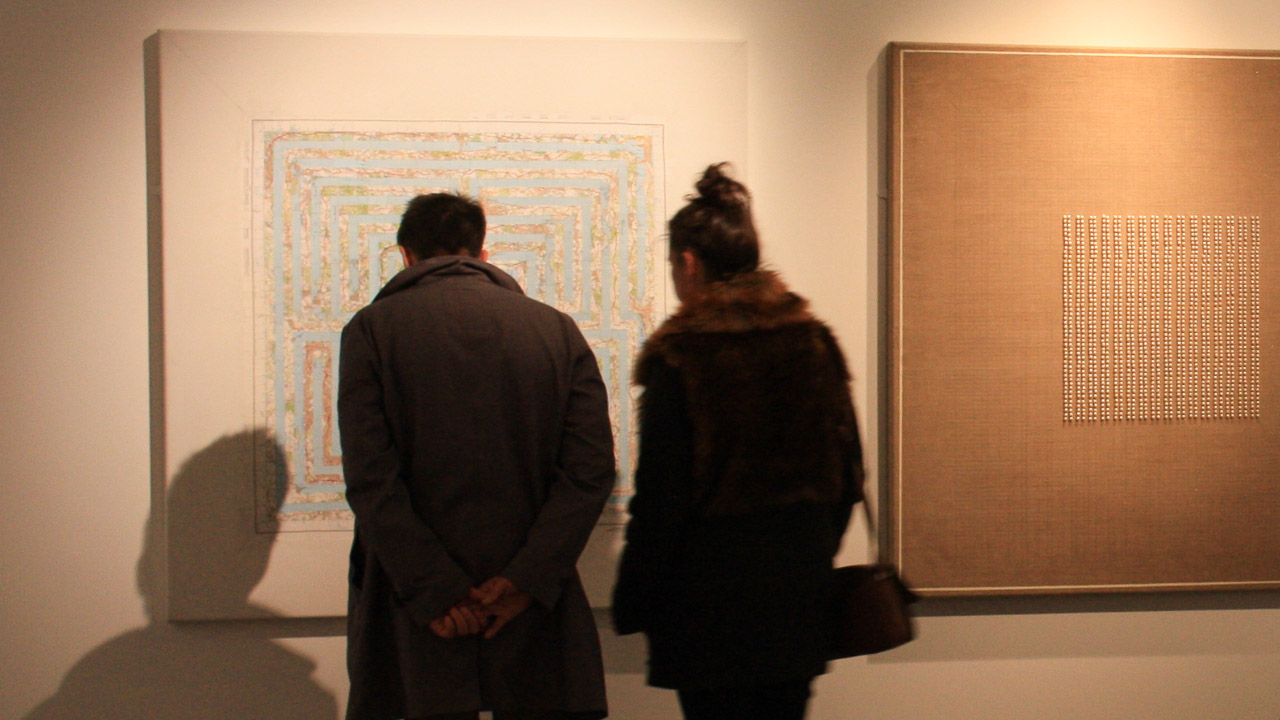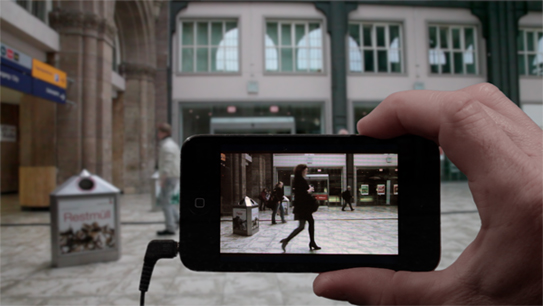This exhibition ‘Are We There Yet? Into the Labyrinth’ at Lighthouse in Poole gave me time to reflect on how gallery visitors actually interact with the exhibitions they visit.
“A symphony is going to take up 40 minutes of your time; a film two hours; a play perhaps three or four hours. But you can choose whether to look at a painting for ten seconds or ten minutes. That’s a good measure of how interested you are by it…” Mail Online
Or maybe not – there’s a Huffington Post article by art historian James Elkin which argues that some people spend a lifetime looking at a single work of art. However, it also admits that studies of visitors to museums have shown that most people spend more time reading the labels by the side of the artworks than they do actually looking at the work and that the time they give to each artwork is between 10 and 30 seconds on average. I’ve seen this even at art fairs too – it’s like speed dating a painting!
So, I chose deliberately to title the works on the walls – there was a list of artworks available on an A4 handout, but otherwise no distractions from simply slowing down and just looking at the pieces themselves.

I tried to be present and available in the gallery space as much as possible during the exhibition run so that visitors could talk to me directly – to have their own guided tour of the artworks if they wanted to. My aim was to actually engage in conversation with visitors – to help them ‘into’ the work and then get their responses directly.
This turned out to be a surprising, wonderful and humbling experience – their multiple and diverse conversations with these works were so much deeper and more profound than I’d anticipated, and they gave the works they liked much more than 30 seconds each – one couple came back four times while I was there, a man recited poetry in front of a favourite piece to me and another told me stories about each grid square in one of the mapworks, again during multiple visits. I’m so grateful for the Arts Council funding that allowed me the luxury of investing the time to engage with visitors in this way.
But what about those who visited the exhibition when the artist was not present? The audio piece playing in the corner referenced ideas around this directly – the piece, ‘Sistine Chapel Whisperings’ is a recording of visitors to the Sistine Chapel trying to talk to one another about the art around them, while simultaneously listening to their official Vatican City Audio Guide. The sound as well as the concept intrigues me – there’s a different quality to it – a new and much quieter hubbub than the noisy flag-wielding tour guides and their flocks that can be so annoying (and amusing) the world over.
However, for this show I didn’t want to record an ‘Official Lighthouse Audio Guide’ – it seemed a bit OTT or pompous or something. I wanted to do something more fun and thought-provoking, like one of Cardiff & Miller’s video walks, ‘physical cinema’ where you use your phone to listen to and follow given directions through a particular space, while simultaneously watching a recording/view of that exact same journey unfold in front of you and where “a strange confusion of realities occurs”.

And, I fully intended to do this – I started writing a ‘script’, talking people through the work, unfolding the stories behind each piece, etc. I even did a run-through recording on my iphone while the gallery was quiet… I had it all planned. I still do, but the exhibition was over before I’d prioritised finishing the tour…
Meanwhile, Hal, our son, came to hang out with me in the gallery one afternoon. And since the gallery floor apparently looked like it would be good for drifting, Hal brought his remote control 1/10th scale touring car and a couple of GoPros that a friend had lent us to test out (thank you Jon!). Fifteen minutes later, he had a complete alternative tour of the gallery in the can so to speak… and no, it doesn’t give you added insight or the stories behind the works, but it does give you a profoundly different and unusual perspective of the show – and yes, all in about 30 seconds! (Thanks Hal…)
But, guided tour or no guided tour, I know visitors spent considerable time looking at the work and thinking about it too – the visitors’ book bears this out. Less than 30 seconds or much more than that… having myself spent much of the 4 week exhibition run spending time with the works observing how people interact with them, my own ideas about these tours and journeys give me plenty to explore in future exhibitions…
